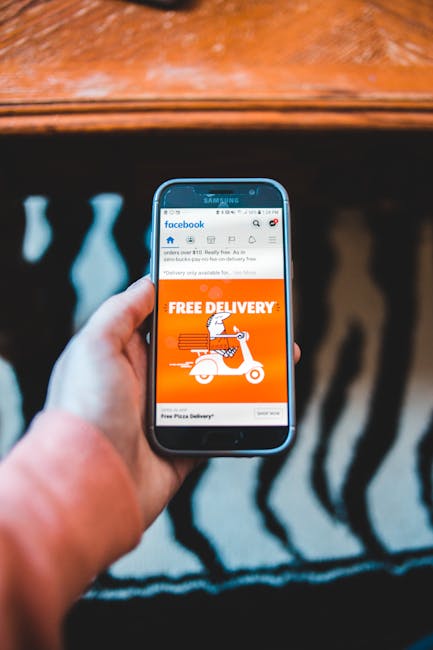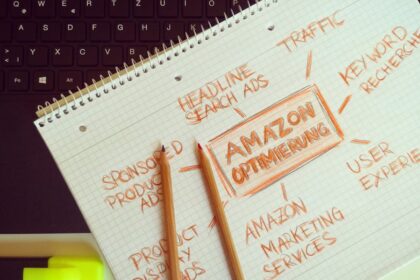Facebook Lookalike Audiences represent a powerful algorithmic leap beyond traditional demographic and interest-based targeting, enabling marketers to uncover vast, untapped pools of potential customers who share essential characteristics with their most valuable existing ones. This sophisticated targeting mechanism leverages Facebook’s immense data trove to identify behavioral and demographic commonalities within a “seed audience,” then algorithmically expands reach to millions of new users who exhibit similar patterns, effectively revealing “hidden” segments with a high propensity for conversion or engagement. The core strength lies in its predictive capability, moving beyond overt interests to infer deeper likelihoods of action, thereby driving efficiency and scale in digital advertising campaigns.
The Foundational Power of Algorithmic Expansion
Traditional targeting often relies on manual assumptions about who your ideal customer is, leading to potentially broad or inaccurate segments. Lookalike Audiences, in contrast, provide a data-driven, algorithmically optimized approach. Facebook’s intricate network analyzes hundreds, if not thousands, of data points – including likes, shares, comments, pages visited, videos watched, ads interacted with, and even offline behaviors matched through hashed data – to build a comprehensive profile of your seed audience. This deep analysis allows the system to identify subtle, non-obvious correlations and patterns that define your best customers. When these patterns are applied to the broader Facebook and Instagram user base, new, highly relevant segments emerge, segments that would be impossible to identify through manual segmentation or conventional targeting methods. This precision at scale is what truly differentiates Lookalikes, transforming ad spend into a more strategic investment by focusing resources on those most likely to yield a positive return. The efficiency gains are often immediately noticeable, manifesting as lower acquisition costs and higher conversion rates.
Understanding the Pillars: Seed Audience Quality and Diversity
The efficacy of any Lookalike Audience is directly proportional to the quality and relevance of its originating “seed audience.” This initial custom audience acts as the template from which Facebook’s algorithm learns. A poorly constructed or irrelevant seed will inevitably lead to a diluted or ineffective Lookalike.
Choosing the Optimal Seed Audience:
-
High-Value Customer Lists: Arguably the most potent seed audience. Uploading a list of your top 10-20% of customers based on Lifetime Value (LTV), purchase frequency, or average order value (AOV) provides the algorithm with a clear blueprint of your most profitable clientele. This allows Facebook to find new individuals who are not just likely to purchase, but likely to become highly valuable, repeat customers.
- Data Richness: Ensure your customer list includes as much data as possible: email addresses, phone numbers, first names, last names, cities, states, zip codes, and countries. More data points allow for more accurate matching.
- Hashing: Facebook requires customer data to be hashed (encrypted) before upload to protect privacy, ensuring that no personally identifiable information (PII) is directly shared.
- Segmentation for Specificity: Rather than a single “all customers” list, consider segmenting by product purchased, service utilized, or even purchase value tiers (e.g., “Customers who spent over $500,” “Customers who purchased Product X”). This allows for more granular Lookalikes tailored to specific offerings or customer segments.
-
Website Visitor Data (Facebook Pixel): The Facebook Pixel is indispensable for creating Lookalikes based on online behavior.
- Specific Event Tracking: Don’t just target “all website visitors.” Focus on users who completed valuable actions:
- Purchasers: Those who triggered the “Purchase” event. This is similar to a customer list but captures online-only conversions.
- Add-to-Carts: Users who showed high intent but didn’t convert, representing a warm audience.
- Lead Form Submissions: For B2B or lead generation businesses, this identifies individuals interested in your services.
- Specific Product Page Viewers: Users who viewed high-margin or popular products, indicating product-specific interest.
- Time on Site/Pages Viewed: Create audiences of users who spent the most time on your site or viewed a significant number of pages, indicating deeper engagement.
- Recency and Frequency: Consider filtering pixel-based audiences by recency (e.g., visitors in the last 30 days) or frequency (e.g., visitors who visited 3+ times). Newer, more engaged data generally yields better Lookalikes.
- Specific Event Tracking: Don’t just target “all website visitors.” Focus on users who completed valuable actions:
-
Engagement Audiences: Users who have interacted directly with your Facebook or Instagram assets.
- Video Viewers: Create audiences of people who watched a significant percentage (e.g., 75% or 95%) of your video content. This indicates strong interest in your brand message or product.
- Facebook Page Engagers: People who liked, commented, shared, or clicked on your Facebook Page posts.
- Instagram Profile Engagers: Similar interactions on your Instagram profile.
- Lead Form Engagers: Individuals who opened or completed a lead form on Facebook or Instagram.
- Event Attendees/Responders: For businesses running events, this is a highly engaged audience.
- Why they are valuable: These audiences demonstrate an existing affinity for your brand, even if they haven’t made a purchase yet. They are closer to the top or middle of the funnel, making Lookalikes from them ideal for awareness and consideration campaigns.
-
App Activity (for App-based Businesses):
- App Installers: Those who have downloaded your app.
- Key Event Users: Users who completed high-value in-app actions, such as “Add Payment Info,” “Initiate Checkout,” or “Purchase.” Just like website purchasers, these are your most valuable app users.
- Active Users: Users who frequently open or interact with your app, indicating sustained engagement.
Seed Audience Size Considerations:
- Minimum Threshold: Facebook requires a minimum of 100 people from a single country in your source audience to create a Lookalike. However, this is a bare minimum and often insufficient for optimal performance.
- Optimal Size: The general recommendation is a seed audience of 1,000 to 50,000 people.
- Too Small (<1,000): If the seed is too small, the algorithm may struggle to identify statistically significant patterns, leading to a less precise Lookalike audience.
- Too Large (>50,000): While a larger seed provides more data, it can also dilute the specificity. For example, using “all website visitors” might be too broad if your website has a high bounce rate or attracts many casual browsers. A more refined seed, like “purchasers,” even if smaller, often yields better results.
- Sweet Spot: For most businesses, a seed of 1,000-10,000 high-quality individuals often strikes the best balance between statistical significance and specificity.
Crafting Lookalike Audiences in Facebook Ads Manager
The process of creating a Lookalike Audience is straightforward within the Facebook Ads Manager, yet requires careful consideration of the source and desired size.
- Navigate to Audiences: From your Facebook Business Manager or Ads Manager, go to “Audiences” under the “All Tools” menu.
- Create Audience: Click the “Create Audience” dropdown button.
- Select Lookalike Audience: Choose “Lookalike Audience” from the options.
- Source: This is where you select your custom audience seed.
- If you’ve already created custom audiences (from pixel data, customer lists, engagement, etc.), they will appear here.
- If not, you’ll need to create a custom audience first by selecting “Create New Source” and following the prompts to upload a customer list or select a pixel event.
- Audience Location: Select the country or countries where you want to find new lookalike users. This is crucial for geographical targeting. You can select multiple countries.
- Audience Size (Percentage): This defines the percentage of the chosen country’s population that Facebook will include in your Lookalike audience. This is where precision meets scale.
- 1% Lookalike: Targets the top 1% of the population in the selected country that most closely matches your seed audience. This is the most precise and generally highest-performing, but also the smallest audience. Ideal for initial testing and highly targeted campaigns.
- 1%-2% Lookalike: Expands the reach slightly while maintaining strong similarity.
- 1%-5% Lookalike: Offers a broader reach with a moderate decline in similarity. Useful for scaling successful campaigns.
- 1%-10% Lookalike: The broadest reach, encompassing 10% of the population most similar to your seed. While very large, the similarity can be significantly diluted. Often used for broad brand awareness campaigns or when needing massive scale.
- Multiple Lookalikes: You can create multiple Lookalike audiences from the same seed, ranging from 1% to 10%, each as a distinct audience (e.g., 1%, 1-2%, 2-3%, 3-5%, 5-10%). This allows for granular testing and campaign segmentation.
- Create Audience: Click “Create Audience.” Facebook will then take some time (usually 6-24 hours) to populate the Lookalike audience. It’s not static; Facebook continuously refreshes Lookalike Audiences to ensure they remain relevant.
Deeper Dives: Advanced Lookalike Strategies
Beyond basic creation, strategic application of Lookalike Audiences unlocks their full potential for sustained growth and optimization.
1. Layering and Combining Lookalikes:
- Lookalike + Interest Targeting: While Lookalikes are powerful on their own, combining them with relevant interest categories can add another layer of qualification, especially for products with very niche markets. For example, a 1% Lookalike of purchasers plus an interest in “organic skincare” if your product falls into that category. This can refine the audience further, although it also reduces its size. Use sparingly and test rigorously.
- Lookalike + Demographic Filters: Adding age, gender, or income filters can be useful if your product has a strong demographic skew that isn’t fully captured by the behavioral patterns of the seed.
- Combining Multiple Lookalikes: You can target an audience that includes multiple Lookalikes (e.g., 1% Lookalike of purchasers AND 1% Lookalike of high-engagement video viewers). This expands the reach while maintaining relevance by drawing from different high-value behavioral sources. Use the “AND” or “OR” logic in your ad set setup. “OR” expands reach, “AND” narrows it.
2. Excluding Source Audiences:
- Essential for Efficiency: Always exclude your original seed audience (the Custom Audience you used to create the Lookalike) and any existing customers or recent converters from your Lookalike campaigns, especially for acquisition campaigns. Showing acquisition ads to people who have already converted is wasteful and provides a poor user experience.
- Funnel-Specific Exclusions:
- When running a Lookalike for website visitors (awareness), exclude purchasers.
- When running a Lookalike for Add-to-Carts (consideration), exclude purchasers to avoid showing conversion ads to those who already bought.
- This ensures your message is relevant to the audience’s stage in the buying journey and prevents ad fatigue.
3. Value-Based Lookalikes (vLLA):
- Beyond Purchase, to Value: If your pixel tracks purchase value (or if your customer list includes LTV data), you can create Lookalikes based on customer value. Instead of just finding people similar to all purchasers, Facebook finds people similar to your most valuable purchasers. This is a crucial distinction.
- Implementation: When setting up a custom audience from pixel data or customer list, ensure that the “value” parameter is passed to Facebook. Then, when creating the Lookalike, select “Value-based” as the option. Facebook’s algorithm will prioritize finding users who are likely to generate higher LTV. This is particularly effective for e-commerce and subscription-based businesses.
4. Lookalikes for Different Funnel Stages:
- Top of Funnel (Awareness/Discovery):
- Seed: Lookalikes from high video viewers (e.g., 95% completion rate), Facebook/Instagram engagers.
- Objective: Brand awareness, video views, reach.
- Creative: Engaging, educational, brand-storytelling content.
- Middle of Funnel (Consideration):
- Seed: Lookalikes from specific page viewers (e.g., product pages, pricing pages), add-to-carts, lead form openers.
- Objective: Traffic, lead generation, engagement.
- Creative: Product benefits, testimonials, problem-solution focus.
- Bottom of Funnel (Conversion):
- Seed: Lookalikes from purchasers, high-LTV customers, most engaged users.
- Objective: Conversions, sales, catalog sales.
- Creative: Strong call-to-actions, limited-time offers, dynamic product ads.
5. International Lookalikes:
- If your business operates globally, you can create Lookalikes based on a seed audience from one country to find similar people in other countries.
- Example: A successful customer base in the US can be used to generate Lookalikes in Canada, the UK, or Australia.
- Considerations: Cultural nuances, language differences, and market maturity can impact performance. Always localize your ad creative and messaging for each target country. Test one country at a time before broad expansion.
6. Dynamic Creative with Lookalikes:
- Combine Lookalikes with Facebook’s Dynamic Creative Optimization (DCO) to automatically test different ad elements (images, headlines, descriptions, CTAs) and deliver the best-performing combinations to your audience. This can further enhance the efficiency of your Lookalike campaigns by ensuring the message resonates maximally.
7. Continuous Testing and Iteration:
- A/B Test Different Seed Audiences: Don’t assume your initial seed is the best. Test a Lookalike from purchasers against a Lookalike from high-value leads or top 10% website visitors.
- Test Different Lookalike Percentages: Compare the performance of 1% vs. 1-3% vs. 3-5% Lookalikes. Often, 1% performs best for direct response, but larger percentages can offer significant scale at acceptable CPAs.
- Refresh Lookalikes: While Facebook automatically refreshes Lookalike Audiences every 3-7 days, it’s good practice to periodically re-upload customer lists or refine pixel events to ensure the seed remains fresh and relevant.
- Segment by Value: If you’re running a campaign targeting a 1-5% Lookalike, consider segmenting it further into 1%, 1-2%, 2-3%, 3-4%, 4-5% if your budget allows for more granular testing. This reveals which specific percentile ranges are most cost-effective.
Common Pitfalls and How to Avoid Them
Even with their immense potential, Lookalike Audiences can underperform if not managed correctly. Understanding and avoiding common mistakes is crucial for success.
1. Poor Seed Audience Quality:
- Mistake: Using a generic “all website visitors” list that includes bounces, bots, or irrelevant traffic, or a customer list that hasn’t been segmented for high value.
- Solution: Prioritize quality over quantity for your seed. Focus on users who have demonstrated high intent or value: purchasers, high-LTV customers, users who spent significant time on key pages, or highly engaged video viewers. Regularly cleanse customer lists to remove outdated or irrelevant entries.
2. Seed Audience Too Small:
- Mistake: Using a seed audience with fewer than 1,000 unique individuals from a single country. While Facebook allows 100, anything below 1,000 often lacks the statistical robustness for the algorithm to find strong commonalities.
- Solution: Aim for a seed of at least 1,000-50,000 quality individuals. If your customer base is too small, focus on broader engagement audiences (e.g., video viewers who watched 75%+ of your content) until you accumulate enough high-value conversions. Combine multiple small, high-quality sources if necessary (e.g., purchasers from January + purchasers from February).
3. Not Excluding Source Audiences:
- Mistake: Running acquisition campaigns to a Lookalike audience that still includes your existing customers or the original seed audience.
- Solution: Always exclude your Custom Audience seed from the ad set targeting your Lookalike. This prevents ad fatigue, avoids wasteful spending, and ensures your message is relevant to new prospects. For example, if running a purchase Lookalike, exclude your “Purchasers” custom audience.
4. Over-Reliance on 1% Lookalikes:
- Mistake: Believing that only 1% Lookalikes are effective and neglecting larger segments. While 1% is often the most precise, it limits scale.
- Solution: Test broader Lookalike percentages (e.g., 1-3%, 1-5%, 1-10%) once your 1% Lookalike campaigns are performing well. You might find that a 2% or 3% Lookalike still delivers acceptable CPA and allows for significant scaling. Run these as separate ad sets to monitor performance independently.
5. Infrequent Refreshing of Seed Data:
- Mistake: Uploading a customer list once and never updating it, or relying solely on old pixel data. Customer behavior and preferences evolve.
- Solution: While Facebook Lookalikes refresh automatically (typically every 3-7 days), for custom lists, it’s best practice to update them periodically (e.g., monthly or quarterly) with your latest customer data. For pixel-based audiences, ensure your pixel is correctly set up to track all relevant events in real-time.
6. Not Segmenting Seeds for Specificity:
- Mistake: Using a single “all customers” or “all website visitors” seed for every campaign.
- Solution: Create segmented Lookalikes based on specific behaviors or value: “high LTV customers,” “customers of Product A,” “add-to-cart users,” “video viewers (95%).” This allows for highly tailored campaigns with relevant messaging for each Lookalike.
7. Lack of A/B Testing:
- Mistake: Launching one Lookalike campaign and assuming it’s optimized without comparing different strategies.
- Solution: Continuously A/B test different Lookalike types (e.g., purchaser LLA vs. video viewer LLA), different Lookalike percentages, different ad creatives on the same Lookalike, and different value-based Lookalikes. Use Facebook’s A/B testing feature for statistically significant results.
8. Ignoring Funnel Stages in Campaign Design:
- Mistake: Using a “conversion” objective Lookalike with awareness-focused creative, or vice-versa.
- Solution: Align your Lookalike audience, campaign objective, and ad creative with the appropriate stage of the marketing funnel. For instance, a Lookalike from video viewers might be best for an “Awareness” objective with engaging video creative, while a Lookalike from purchasers is ideal for a “Conversions” objective with a direct-response ad.
9. Overlapping Lookalike Audiences in the Same Ad Set:
- Mistake: Running multiple ad sets with heavily overlapping Lookalike audiences targeting the same geographical area without proper exclusion, leading to internal competition and increased costs.
- Solution: If you are testing different Lookalikes, ensure they are in separate ad sets. Use exclusions to prevent overlap if necessary (e.g., exclude your 1% LLA from your 1-3% LLA campaign if you want to target only the 2-3% segment). For best results, use “stacked” Lookalikes where the ad set targets the 1-10% LLA, allowing Facebook’s delivery system to optimize.
10. Not Monitoring Performance Metrics:
- Mistake: Launching Lookalike campaigns and not regularly tracking key performance indicators (KPIs) like CPA, ROAS, CTR, and conversion rate.
- Solution: Constantly monitor your campaign performance in Ads Manager. If a Lookalike audience is underperforming, pause it, refine your seed, or test a new one. Don’t let underperforming audiences drain your budget. Look for trends and adjust bids, budgets, or creative based on data.
Measuring Success: KPIs and Attribution
Effective measurement is paramount to optimizing Lookalike campaigns and demonstrating their value. Key Performance Indicators (KPIs) must be aligned with your campaign objectives.
Key Performance Indicators (KPIs):
- Return on Ad Spend (ROAS): For e-commerce and direct sales, ROAS is critical. It measures the revenue generated for every dollar spent on ads. High ROAS indicates efficient ad spend and a profitable Lookalike.
- Cost Per Acquisition (CPA) / Cost Per Lead (CPL): For lead generation or customer acquisition campaigns, CPA (cost per purchase) or CPL (cost per lead) indicates the efficiency of your Lookalike in acquiring a desired action. Lower CPA/CPL generally signifies a more effective Lookalike.
- Click-Through Rate (CTR): A high CTR indicates that your ad creative and messaging resonate well with the Lookalike audience, suggesting good audience-message fit.
- Conversion Rate: The percentage of people who complete a desired action (e.g., purchase, lead submission) after clicking on your ad. A strong conversion rate signals a high-quality Lookalike audience.
- Cost Per Click (CPC) / Cost Per Mille (CPM): While not direct indicators of success, these provide insights into bidding efficiency and audience competition. A high CPM for a Lookalike might indicate a very competitive niche or a highly sought-after audience.
- Lifetime Value (LTV): For sophisticated businesses, tracking the LTV of customers acquired through different Lookalike audiences can reveal which Lookalikes not only acquire customers cheaply but also acquire valuable customers who generate long-term revenue. This requires integrating Facebook ad data with your CRM.
Attribution Models:
Understanding how Facebook attributes conversions is vital, especially when comparing performance across different campaigns and platforms.
- Default Attribution Window: Facebook’s default attribution window is typically “7-day click or 1-day view.” This means a conversion is attributed to your ad if a user clicked on your ad within 7 days or viewed your ad (without clicking) within 1 day before converting.
- Customizing Attribution: You can customize this window in Ads Manager (e.g., 28-day click, 7-day view). The choice of attribution window significantly impacts reported conversions and ROAS.
- Multi-Touch Attribution: Real customer journeys are rarely linear. Users might see your Facebook ad (Lookalike), then search for your brand on Google, click an organic link, and convert later. Facebook’s attribution is primarily focused on its own platform. For a holistic view, consider using a third-party attribution tool or Google Analytics’ multi-channel funnels to understand how Lookalikes contribute to the broader customer journey in conjunction with other marketing channels.
- Data Latency: Be aware that Facebook’s reporting may have a slight delay (up to 72 hours) for conversions to fully populate. Don’t make hasty decisions based on incomplete data.
Reporting and Analysis:
- Custom Columns: Customize your Ads Manager columns to display the KPIs most relevant to your campaign goals. This allows for quick, at-a-glance performance analysis.
- Breakdowns: Use the “Breakdowns” feature in Ads Manager to analyze Lookalike performance by age, gender, placement (Facebook Feed, Instagram Stories, Audience Network, etc.), and region. This can reveal segments within your Lookalike that perform exceptionally well or poorly, informing further optimization.
- Trend Analysis: Look for performance trends over time. Is the CPA increasing? Is the CTR declining? These signals indicate potential audience fatigue or changing market conditions, prompting a need to refresh or refine your Lookalakes.
Future Trends and Considerations for Lookalike Audiences
The digital advertising landscape is constantly evolving, with privacy concerns and technological advancements reshaping how audience targeting operates. Lookalike Audiences, while robust, are not immune to these shifts.
1. Privacy and Data Regulations (iOS 14+ / ATT):
- Impact: Apple’s App Tracking Transparency (ATT) framework, introduced with iOS 14.5, significantly limited advertisers’ ability to track user behavior across apps and websites without explicit user consent. This has reduced the amount of data available for Facebook’s pixel and SDK, potentially impacting the precision and size of seed audiences, particularly for website visitors and app users.
- Mitigation:
- Conversions API (CAPI): Implementing Facebook’s Conversions API allows advertisers to send web and offline conversion events directly from their server to Facebook, bypassing browser-based tracking limitations. This provides a more reliable and privacy-friendly data source for seed audiences.
- First-Party Data Emphasis: The shift underscores the increasing importance of robust first-party data (customer lists, CRM data). Businesses with strong customer databases are better positioned to create high-quality Lookalike seeds regardless of browser or device changes.
- Value Optimization: Facebook’s ad delivery system is adapting to work with less granular data. Focusing on value optimization (e.g., Value-based Lookalikes) allows the algorithm to find users likely to generate high revenue, even with reduced individual tracking signals.
2. AI and Machine Learning Advancements:
- Increasing Sophistication: Facebook’s underlying AI algorithms are continuously improving. They can process more complex data patterns and identify subtle similarities with increasing accuracy, even with reduced signal from individual devices.
- Automated Audience Discovery: Expect more automated recommendations for Lookalike audiences and combinations from Facebook, leveraging its vast data and machine learning capabilities to suggest optimal targeting without manual input.
- Predictive Analytics: The future will see more emphasis on predictive analytics within Lookalikes – not just finding people similar to past customers, but predicting who will become your best future customers based on complex behavioral models.
3. Broad Targeting with Machine Learning:
- The “Broad Audience” Trend: Some advertisers are finding success by targeting very broad audiences (e.g., age 18-65, worldwide, with minimal interests) and relying heavily on Facebook’s algorithm to find the right people based on conversion events and campaign objectives.
- Lookalikes’ Role: While broad targeting is gaining traction, Lookalikes remain crucial for initial seed generation and providing the algorithm with a strong starting point for optimization, especially for businesses with specific niche markets or high-value customer profiles. Lookalikes can act as a more refined “broad” target, giving the algorithm a higher probability pool to work from.
4. Privacy-Enhancing Technologies (PETs):
- Federated Learning, Differential Privacy: These technologies allow insights to be derived from data without revealing individual user information. As privacy regulations tighten, Facebook will likely integrate more of these techniques into its audience targeting mechanisms, ensuring compliance while still delivering effective advertising.
- Impact on Lookalikes: This means that the underlying data analysis for Lookalikes will become even more opaque to marketers, but the results (the ability to find relevant users) should ideally remain robust, driven by advanced privacy-preserving AI.
5. Cross-Platform Integration:
- Unified Customer Profiles: As businesses integrate more of their customer data (CRM, offline sales, website, app) into unified profiles, the ability to create incredibly rich, multi-faceted seed audiences for Lookalikes across various platforms will grow. This moves beyond just Facebook data to a more holistic view of the customer.
Ethical Considerations and Transparency
While powerful, the use of Lookalike Audiences also raises ethical considerations regarding data privacy and transparency.
- Data Collection Transparency: Marketers have a responsibility to be transparent with their users about data collection practices, especially concerning pixel tracking and the use of customer lists for advertising purposes. Clear privacy policies and cookie consent banners are essential.
- Informed Consent: Ensure that any customer data used for Lookalike seeds has been collected with appropriate consent, adhering to regulations like GDPR and CCPA. Hashing data is a crucial step in protecting PII, but consent for data processing remains paramount.
- Avoid Sensitive Categories: While Facebook has restrictions on targeting based on sensitive categories, marketers should exercise caution when creating seed audiences that might inadvertently lead to targeting based on health, religion, or other protected characteristics, even if the intent is purely commercial.
- Ad Experience: Lookalike Audiences aim to deliver relevant ads, which generally improves the user experience. However, an overly aggressive ad frequency or irrelevant messaging can still lead to ad fatigue or negative perception. Regularly monitor frequency and adjust campaigns as needed.
- Bias in Algorithms: AI algorithms, including those used for Lookalikes, can inherit biases present in the training data. If your seed audience inadvertently reflects a bias (e.g., only targeting a specific demographic due to past marketing practices), the Lookalike might perpetuate that bias. Regularly reviewing the demographics and performance of your Lookalike audiences can help identify and mitigate such issues.
Unlocking hidden audiences with Facebook Lookalikes is not merely a technical exercise but a strategic art. It demands a deep understanding of your ideal customer, meticulous data management, continuous testing, and an adaptive approach to an ever-evolving digital landscape. By mastering the nuances of seed audience quality, strategic layering, and diligent performance monitoring, businesses can consistently discover and engage high-potential customer segments, driving unprecedented growth and optimizing ad spend for maximum return.











